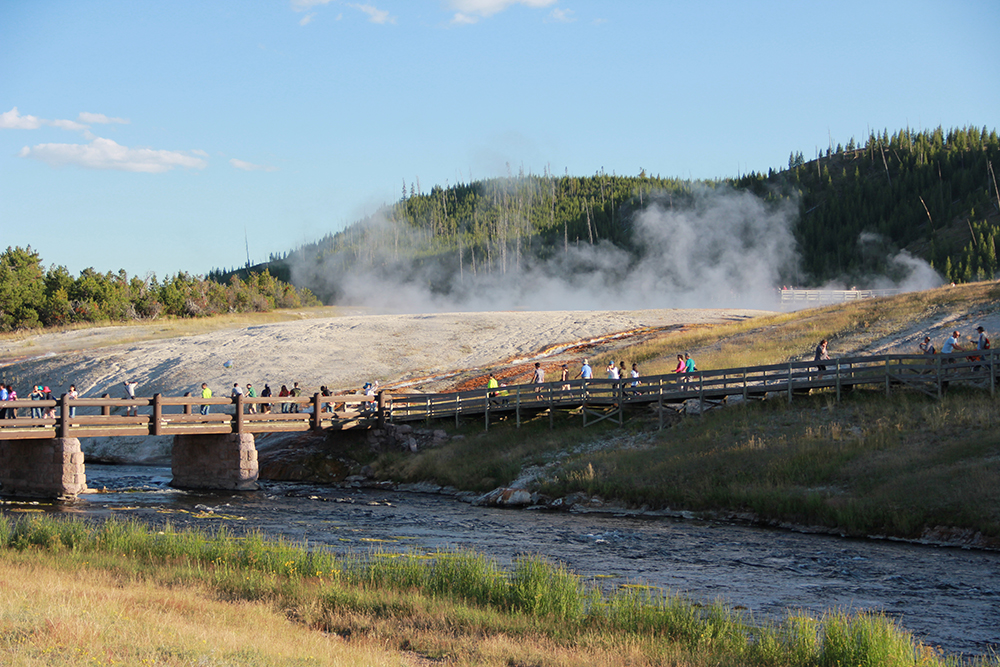Yellowstone National Park. Photo Courtesy of Jonathan Holder.
This is the part of a series of posts for The Hill by Shawn Regan, who is a contributor to their blog.
The federal government’s primary source of funding for land acquisitions — the Land and Water Conservation Fund (LWCF) — is set to expire on Sept. 30. As the clock runs out, many groups are pressing Congress to permanently reauthorize and fully fund the program, with no reforms or questions asked.
Some have called the LWCF “the most popular parks program you’ve never heard of.” It devotes up to $900 million each year from offshore oil and gas revenues for conservation and recreation purposes at both the federal and state level. In its current form, however, federal LWCF funds can only be used for acquiring more public lands. They cannot be used for the care and maintenance of existing federal lands.
In other words, the LWCF allows the federal government to purchase more land, but it does not provide any means of taking care of those lands — or the critical needs that exist on the hundreds of millions of acres the federal government already owns.
The federal government controls more than 635 million acres of land in the United States, including 62 percent of Idaho, 67 percent of Utah and more than 80 percent of Nevada. Since the LWCF was enacted in 1965, the government has spent more than $10 billion acquiring 5 million acres of land, mostly in the West.
But the federal government cannot take care of the lands it already owns. The National Park Service alone faces an $11.5 billion backlog in deferred maintenance projects, according to recent data from the agency. Overall, the maintenance backlog for the Interior Department — which also includes the Bureau of Land Management and the Fish and Wildlife Service — is estimated between $13.2 billion and $19.3 billion.
Across the entire federal estate, billions of dollars are needed for wastewater system repairs, campground and trail maintenance, building repairs, and the transportation infrastructure necessary for people to access and enjoy public lands. Yellowstone and Yosemite, two of the most iconic national parks, each face more than half-billion dollars in unmet maintenance needs.
The LWCF reauthorization presents an opportunity to address many of the critical needs on existing federal lands and prevent further increases in the government’s deferred maintenance backlog. As conservationists, we should insist that conservation does not mean simply acquiring more land; it means ensuring resources are available to adequately care for the land.
Conservationists should also recognize there are tradeoffs. Funding devoted to land acquisition means less funding is available for land conservation, especially in today’s budget climate. Some say Congress should just increase appropriations to federal land agencies instead of reforming the LWCF. But here’s the problem: Congress does not prioritize mundane maintenance projects on public lands, and it never has. Politicians would rather create new parks than fix a leaky wastewater system. LWCF reauthorization presents an opportunity to create a dedicated funding source to address the backlog of critical maintenance projects on existing public lands.
Others argue that reformers would be raiding the conservation fund. But prioritizing the care and maintenance of existing lands is the opposite of raiding — it’s the definition of conservation.
Testifying before the House Subcommittee on Federal Lands in March, Jon Jarvis, director of the National Park Service, said that the deferred maintenance backlog is a higher priority than adding new federal lands. But when it comes to the LWCF, Jarvis has no such choice in the matter. If the funds are to be used by the National Park Service, they can only be used for land acquisition.
The National Park Service will celebrate its 100-year anniversary next year with billions of dollars in unmet maintenance needs. It’s time for conservationists to step up and put forth practical reforms that address these challenges — not just simply add more lands.




